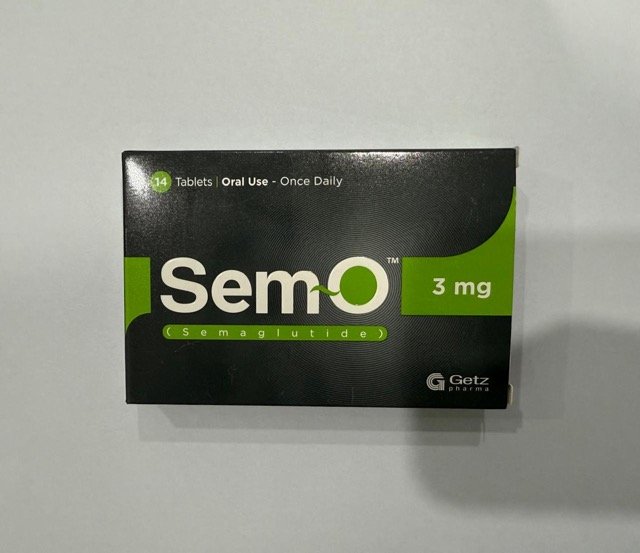Emicizumab is a monoclonal antibody therapy used in the treatment of hemophilia A, a genetic disorder in which the blood does not clot properly. It is designed to mimic the function of factor VIII, a protein that is essential for blood clotting and is deficient in individuals with hemophilia A.
Unlike traditional treatments for hemophilia A, such as factor VIII replacement therapy, which involves regular intravenous infusions of clotting factor, emicizumab is administered subcutaneously (under the skin) once weekly or every two weeks. It works by bridging activated factor IX and factor X, thus restoring the blood coagulation process.
Emicizumab injection has been developed by Chugai and is marketed by the brand name "Hemlibra''. It is indicated for the treatment of patients with Hemophilia A with or without factor VIII inhibitors.
Emicizumab (Hemlibra) Uses:
- Prophylaxis of Hemophilia A:
- It is indicated for routine prophylaxis of patients with hemophilia A to prevent or reduce the frequency of bleeding episodes.
- Because of its unique mechanism of action, It can be. administered to patients who have developed antibodies or inhibitors to factor VIII.
Emicizumab Adult dose:
Emicizumab (Hemlibra) Dose in the prophylaxis of Hemophilia A in Adults:
- At the start of treatment, the dose is 3 milligrams per kilogram of body weight. This is given once a week for 4 weeks.
- After that initial phase, the dose is adjusted for maintenance. It can be either:
- 1.5 milligrams per kilogram once a week, or
- 3 milligrams per kilogram once every 2 weeks, or
- 6 milligrams per kilogram once every 4 weeks.
It's important to note that if someone is already using other medicines to prevent bleeding (like bypassing agents), they should stop using them the day before starting emicizumab. However, if they're using factor VIII for prevention, they can continue during the first week of emicizumab therapy.
Emicizumab Dose in children:
Emicizumab (Hemlibra) Dose in the prophylaxis of Hemophilia A in Children:
For infants, children, and adolescents with hemophilia A, here's how emicizumab is typically used for prevention:
- Initial loading dose: Subcutaneous (SubQ) injection of 3 milligrams per kilogram once weekly for the first 4 weeks. This means they'll receive this dose for a total of 4 doses over 4 weeks.
- Maintenance therapy: After the initial loading dose, the dose is adjusted for ongoing treatment. There are different options for this:
- SubQ injection of 1.5 milligrams per kilogram once weekly
- SubQ injection of 3 milligrams per kilogram once every 2 weeks
- SubQ injection of 6 milligrams per kilogram once every 4 weeks
It's important to remember that if the patient is using other medications to prevent bleeding, such as bypassing agents, they should stop using them the day before starting emicizumab. However, if they're using factor VIII for prevention, they can continue during the first week of emicizumab therapy.
Emicizumab (Hemlibra) Pregnancy Risk Category: C
- Studies on how emicizumab affects animal reproduction haven't been done.
- Emicizumab is a type of medicine made to act like a human antibody.
- It can cross the placenta, which means it might affect a developing baby if used during pregnancy.
- Women who could become pregnant should use reliable birth control while they're using emicizumab.
Emicizumab use during breastfeeding:
- It's uncertain if emicizumab can be found in breast milk.
- However, since emicizumab is similar to a human antibody, and human antibodies are naturally present in breast milk, it's possible that emicizumab could pass into breast milk.
- If a mother is considering breastfeeding while using emicizumab, it's essential to weigh the potential risk to the baby with the benefits of breastfeeding and the treatment's benefits to the mother.
Emicizumab (Hemlibra) Dose in Kidney disease:
- The manufacturer's instructions do not include any specific adjustments to the dosage of emicizumab for people with renal impairment.
- This means that individuals with kidney problems typically do not need to change their emicizumab dosage based solely on their kidney function.
Emicizumab (Hemlibra) Dose in Liver disease:
- According to the manufacturer's labeling, there are no dosage adjustments specified for individuals with hepatic impairment when it comes to emicizumab.
- This means that people with liver problems typically do not need to alter their emicizumab dosage based solely on their liver function.
Common Side Effects of Emicizumab (Hemlibra):
- Central nervous system:
- Headache
- Local:
- Injection site reaction
- Erythema at injection site
- Neuromuscular & skeletal:
- Arthralgia
Less Common Side Effects of Emicizumab (Hemlibra):
- Dermatologic:
- Injection site pruritus
- Gastrointestinal:
- Diarrhea
- Immunologic:
- Antibody development
- Local:
- Pain at injection site
- Miscellaneous:
- Fever
Contraindications to Emicizumab (Hemlibra):
According to the manufacturer's labeling, there are no contraindications listed for emicizumab. This means that there are no specific situations where the use of emicizumab is strictly prohibited based on medical conditions or other factors.
Warnings and precautions
Thromboembolism, Thrombotic microangiopathy: [US-Bound Warning]
- A serious warning, called a US Boxed Warning, is issued regarding the use of emicizumab.
- It highlights the risk of developing thrombotic microangiopathy and thromboembolism, particularly when patients receiving emicizumab prophylaxis are also administered activated prothrombin complex concentrate (aPCC) at a cumulative amount exceeding 100 units per kilogram over 24 hours for at least 24 hours.
- Symptoms of these conditions may include thrombocytopenia (low platelet count), microangiopathic hemolytic anemia (abnormal breakdown of red blood cells), and acute kidney injury.
- If these symptoms occur, both aPCC administration and emicizumab dosing should be stopped.
- Improvement in symptoms is typically observed within one week for thrombotic microangiopathy and one month for thromboembolism after discontinuation of aPCC.
- Resuming emicizumab should be carefully considered only after complete resolution of these complications, with the healthcare provider weighing the benefits against the risks.
Emicizumab: Drug Interaction
Note: Drug Interaction Categories:
- Risk Factor C: Monitor When Using Combination
- Risk Factor D: Consider Treatment Modification
- Risk Factor X: Avoid Concomitant Use
|
Risk Factor C (Monitor therapy). |
|
|
Complex Anti-inhibitor Coagulant (Human). |
Emicizumab could increase the thrombogenic effects of Anti-inhibitor Coagulant Complex Human. Risk C: Monitor therapy |
|
Risk Factor X (Avoid Combination) |
|
|
Belimumab |
Monoclonal Antibodies can increase the toxic/adverse effects of Belimumab. |
Monitoring parameters:
Monitoring for Thrombotic Risks:
- Thrombotic microangiopathy and thromboembolism can occur when activated prothrombin complex concentrate (aPCC) is given alongside emicizumab.
- Watch for symptoms such as low platelet count, abnormal breakdown of red blood cells, and acute kidney injury.
- Stop both aPCC and emicizumab if these symptoms arise.
Monitoring Coagulation Parameters:
- Use single factor assays with chromogenic or immunobased methods to monitor coagulation.
- Be cautious with chromogenic factor VIII (FVIII) activity tests; those made with human proteins may not accurately reflect emicizumab's effect, while bovine protein tests are insensitive to emicizumab.
- Emicizumab might show false negative results in clotting-based Bethesda assays for functional FVIII inhibition; consider using a chromogenic Bethesda assay with a bovine-based FVIII test.
- Effects on coagulation assays might persist for up to six months after the last emicizumab dose.
How to administer Emicizumab (Hemlibra)?
Subcutaneous (SubQ) Administration:
- Do not shake the vial containing emicizumab.
- Administer the injection immediately after removing it from the vial.
- Rotate injection sites, choosing from the upper outer arms, thighs, or any quadrant of the abdomen.
- Avoid injecting into moles, scars, or areas with tender, bruised, red, hard, or broken skin.
- Patients can self-administer, or a caregiver can give the injection. However, healthcare providers should handle injections in the upper outer arm.
- Self-administration is not recommended for children under 7 years old.
- For detailed preparation and additional administration techniques, consult the product information.
- When combining vials to administer the prescribed dose, do not mix vials with different concentrations.
Mechanism of action of Emicizumab (Hemlibra):
- Emicizumab is a type of medication known as a humanized monoclonal modified immunoglobulin G4 (IgG4) antibody.
- It works by targeting both factor IXa and factor X, which are important for blood clotting.
- By bridging these factors together, emicizumab helps to restore the function of activated factor VIII, which is lacking in individuals with hemophilia A.
- It's important to note that emicizumab is different from factor VIII and does not trigger the development of inhibitors against factor VIII.
- Additionally, its effectiveness and how the body processes it (pharmacokinetics) remain consistent across different age groups, from pediatric to adult patients aged 1 to 77 years.
Distribution:
- The volume of distribution (V) is approximately 10.4 liters, indicating the apparent space in the body where emicizumab is distributed.
Bioavailability:
- When administered subcutaneously (SubQ), emicizumab shows a bioavailability ranging from 80.4% to 93.1%, meaning that a high percentage of the drug reaches the bloodstream and is available for use.
Half-life elimination:
- The half-life of elimination for emicizumab is approximately 26.9 days, with a standard deviation of ±9.1 days.
- This represents the time it takes for half of the drug to be removed from the body.
International Brand Names of Emicizumab:
- Hemlibra
Emicizumab Brand Names in Pakistan:
No Brands Available in Pakistan.



.jpeg)



